If you consider yourself a modern SaaS marketer with your salt, then it’s safe to assume you’ve heard the term ICP marketing before. But in an industry as jargon-and-acronym-heavy as SaaS marketing, it’s easy to hear about a term without truly grasping it. Having said that, regardless of which terms we choose to use in your day-to-day grind, we all share a common obsession with our end buyer.
And here enters the ICP – or ideal customer profile.
In its most explicit definition, your ideal customer profile defines the firmographic, environmental and behavioral attributes of accounts that your brand has projected to be a perfect fit to become a valuable customer.
As you could probably guess by the name, ICP marketing is a SaaS marketing framework that builds its spine around your ICP.
The Precursor To Customer-Led Marketing
Marketing strategies such as ICP marketing can be considered the precursors to more sophisticated SaaS marketing methodologies such as Customer Generation. However, just because they came prior doesn’t mean they don’t have value in today’s modern marketing world.
There is one thing that all of the most successful SaaS strategies share in common.
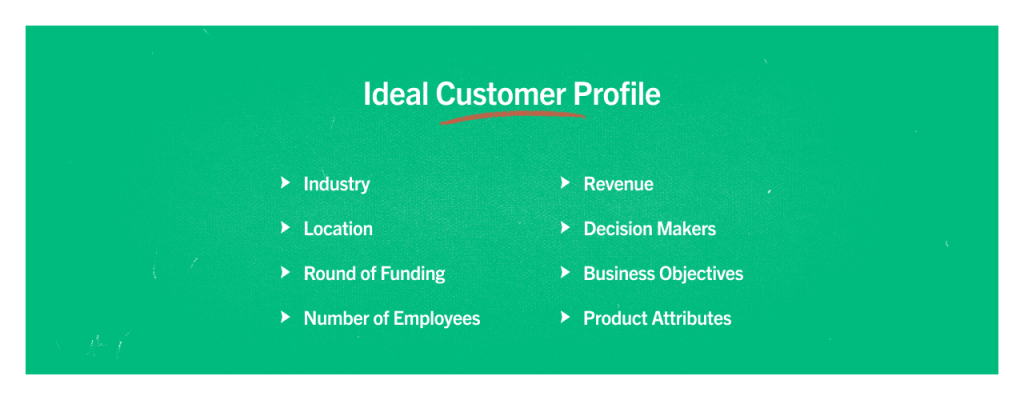
Now, before you go ahead and guess the obvious answer – the customer – I’ll double down on the question.
What does the term “customer” mean to you in terms of your marketing strategies?
Take a moment to consider the question above. When you think of your “ideal” customer profile what comes to mind? Are you listing verticals, companies, brands, or departments? Or are you taking it to the next level and thinking of exact companies?
Certain ABM SaaS frameworks prioritize building out an entire list of target accounts to coordinate your entire marketing strategy. But even these are still cutting themselves early at the company level.
Before we dive any deeper, take a moment to consider, who at these target accounts/companies is the actual person who’s going to be finding your brand? And, furthermore, who’s going to be the actual person signing on the dotted line? This is where the ABM world is ripe for an upgrade – and ICP marketing is the catalyst to that evolution.

Ideal Customer Profile Defined
For the sake of refining definitions, an Ideal Customer Profile is a data-backed description of the pain points and firmographic characteristics that define your hypothetical ideal customer – the type of customer that would most benefit from the products and services that you provide.
But ICP Marketing is only the tip of the iceberg. Crafting your SaaS Marketing Strategies around your ICP is just the beginning. To truly embrace a customer-led methodology, you’ll have to take things quite a bit further.
The Evolution of ICP Targeting: Customer Generation
ICP marketing and Customer-led approaches drive alignment between sales, marketing, and customer success resulting in higher performance and greater confidence in your ability to allocate capital.
You may not want to hear it, but your product is not for everyone. Unfortunately, traditional demand generation campaigns forgot about this. By leveraging first party data, detailed segmentation, and emotion we motivate your ideal customer from apathy to action.
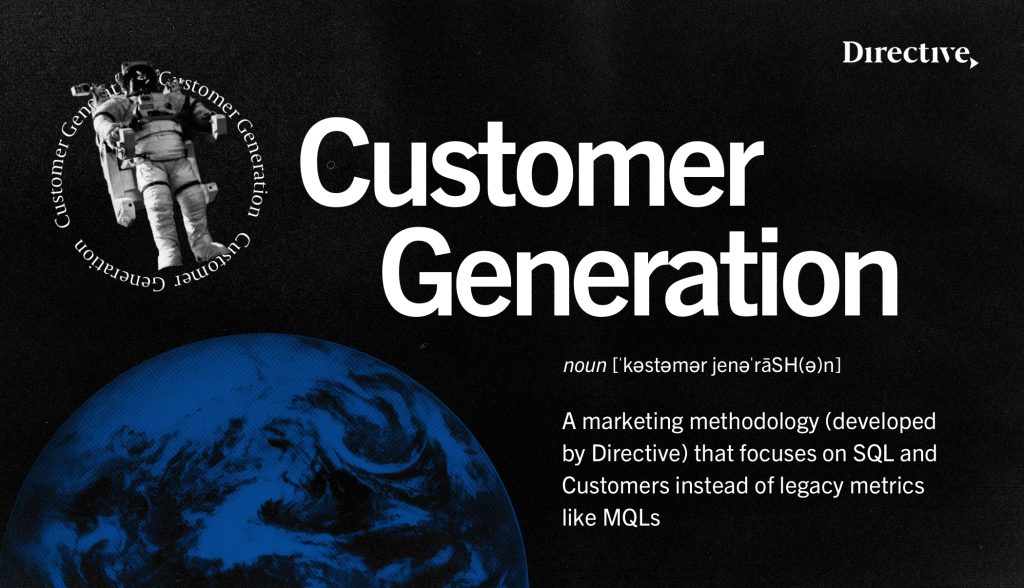
But, in order to dive deep into your customer’s psyche, you need to start with your ICP. So, let’s take a look at what is included under the umbrella of your ideal customer profile.
What Should Your Final ICP Look Like?
You don’t need to have a million datapoints to define your ICP. In fact, it should be (somewhat) simple. If it’s too strict, you’ll find yourself with too small a target to aim for. If it’s too broad, it defeats the purpose of the whole exercise.
If you’re struggling to find the right balance, start with lots of detail. When the time comes to size up your TAM (total addressable market), SAM (specific addressable market), or SOM (specific obtainable market), you can always remove certain filters to make your pool large enough to be meaningful.
How To Create An ICP
Let’s start with how to craft an accurate (and valuable) ICP. Let’s start off with a simple but sometimes brutal fact: your product/service isn’t for everyone.
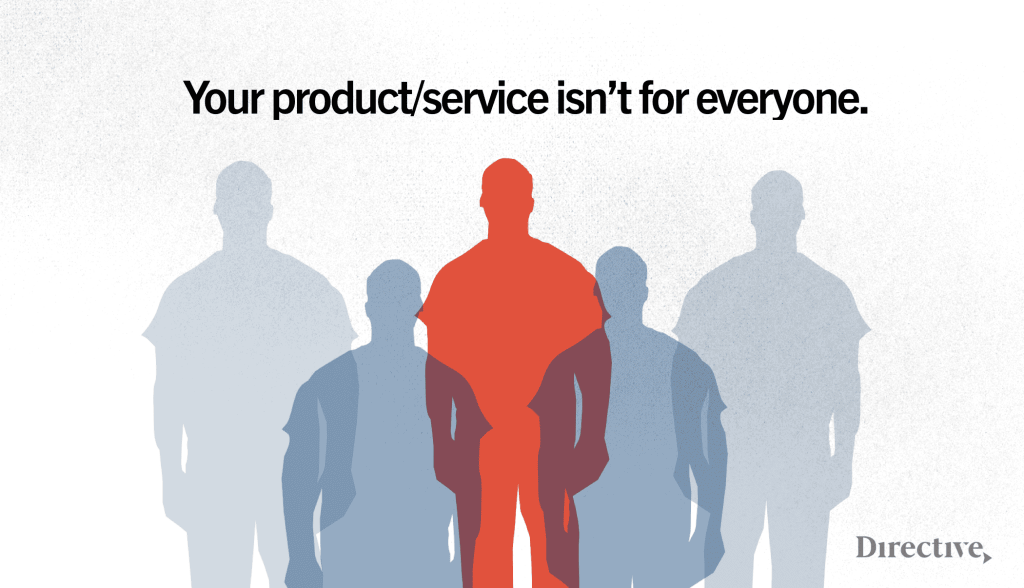
Step 1: Make a list of your best customers
It may seem like an obvious step, given the name. But the vast majority of search marketers fail to account for their most valuable source of consumer data: their existing customers.
Instead of building your strategies on the back of ahrefs keyword data, maybe its time you dive into your NPS reviews to define your high priority verticals.
Start by reviewing your current customers and highlight your top 5 who you’d like to replicate if you could.
If you’re in startup mode and don’t have many customers yet, think about the customer you’d like to attract. My biggest piece of advice here is to focus on customers who have money and are growing.
Questions to ask yourself in highlighting your best customers include:
- Who are your most profitable customers?
- Which customers do you like working with?
- Which customers give you repeating business?
- Who has stayed with you the longest?
- Who has the most opportunity to scale your business offerings?
Step 2: Research common attributes
Now it’s time to analyze the list you’ve put together of your top customers. This is the phase where you’ll brainstorm and do further research on your customers to get a more detailed psychological picture.
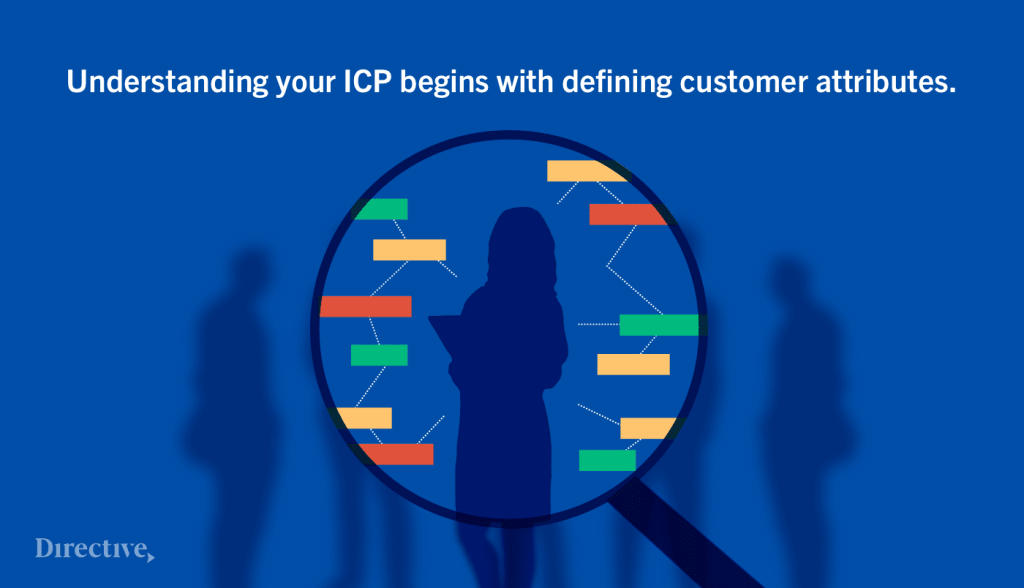
Define as many attributes as you can for each customer and look for commonalities between them. What is going right? As you notice these trends, you will build an understanding of your ideal customer.
Step 3: Outline opportunities and challenges
The next step is to define the challenges and opportunities your ICPs face and address how you will approach those issues.
At Directive, we like to define these challenges as jobs to be done or JTBD. This way we are able to target our content beyond simply the position one holds at a company, but the daily tasks/responsibilities we can help them with.
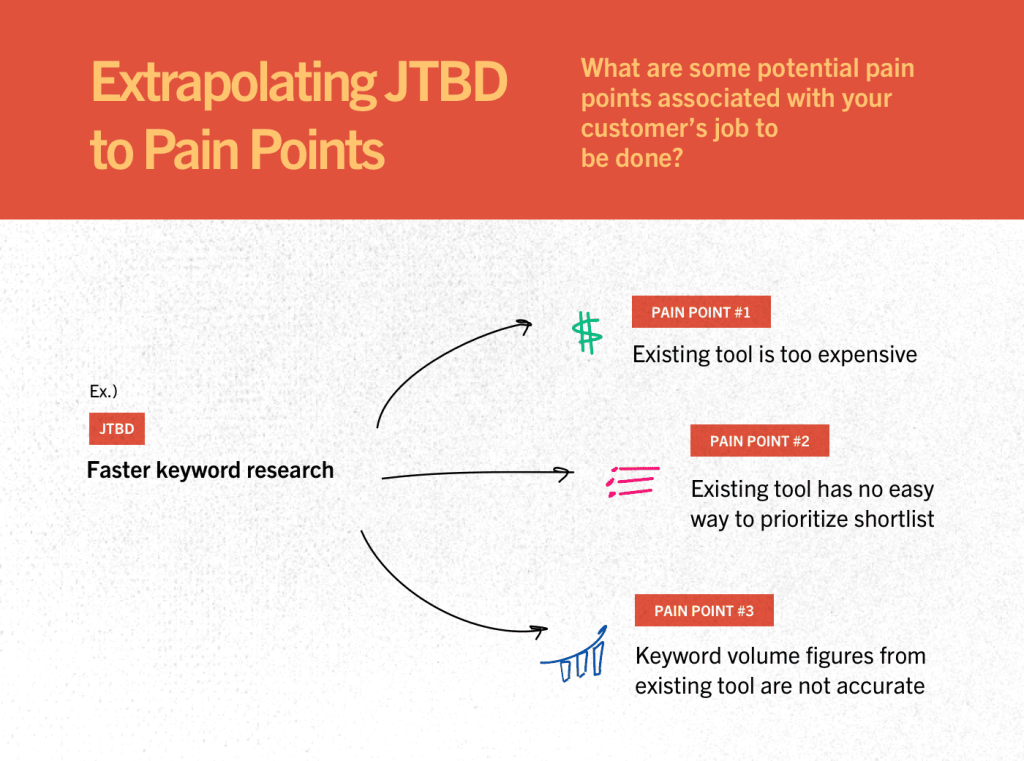
Step 4: Document and target your ICP
Now that you’ve gathered all the data, you’ve done all the work, and you’ve crafted a crystal clear image of who your best customers are, it’s time to take action.
The final step is to create a document that clearly outlines each ICP and lists all the awesome information you’ve gathered about them.
Now, you’ll have to consider a few different formats for this ICP outline. Why? Because your different business units and marketing strategies are going to cater to different psychological pain points of this shared ICP.
It’s no surprise that a creative service is going to focus on different service offerings, goals, and personal concerns of your end customer than say, that of a paid media specialist. Knowing the difference between these different values and JTBD of a singular ICP is how you can start to leverage the targeting potential of your end buyer.
How To Use Your ICP In Sales + Marketing
Have you ever taken a moment to consider how your sales team “qualifies” the ever elusive marketing qualified lead? Well, if you haven’t put it together by now, your brand’s definition of your ICP is going to play a big roll in defining your criteria for determining the validity of an MQL. This is where ICP marketing goes from the abstract and theoretical to the practical and strategical.
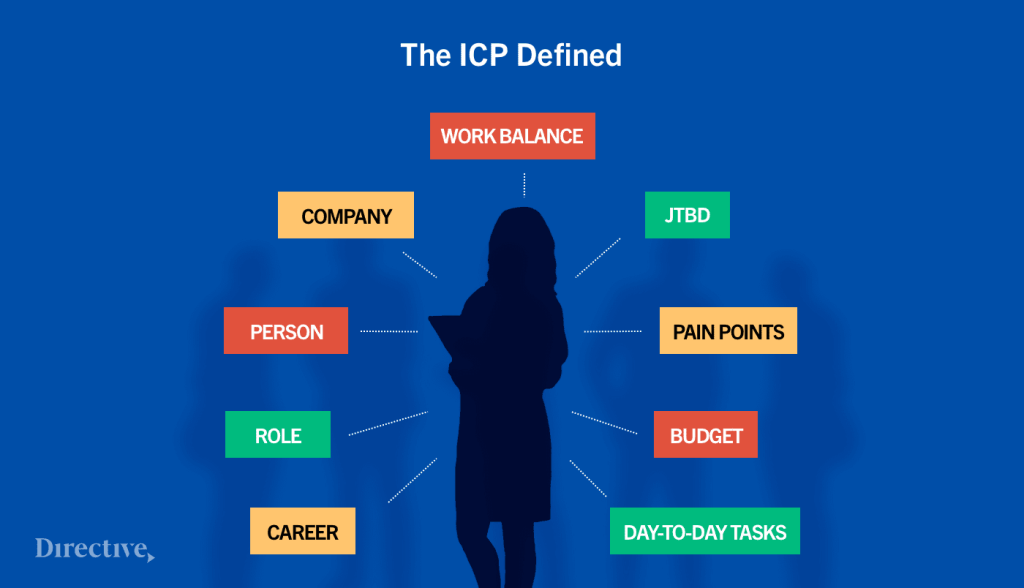
Integrating Your ICP Into Lead Generation
The true potential of your ICP lies in combing it with your Total Addressable Market (TAM) to build account lists, and aggressively scale spend with statistical confidence. By building a TAM you can rely on 1st party data over wasted platform ad spend. This not only future proofs your campaigns; but also gives you the confidence to grow brand advertising because every impression delivered will be a future customer.
When dancing the line between volume and value, quality and quantity (as is the case with most demand gen strategies), knowing how to optimize your ad spend and dedicate it only towards viable leads can either make or break a campaign.
This gives you the two-fold benefit that most marketers only dream of:
- The confidence that every penny spent is being dedicated towards a potential customer and not a wasted click from an irrelevant platform targeting algorithm.
- The confidence to scale your campaigns once you start to see success based on the above fact that you’re already hitting your ideal end buyer.
Customer Generation And The Next Age of ICP Marketing
ICP marketing can be considered a great step towards more customer-led marketing methodologies. But in the end, unless you’re defining the beginning, middle, and end of your marketing funnels (for lack of a better term) by your end customer, then you’ll always be a step behind.
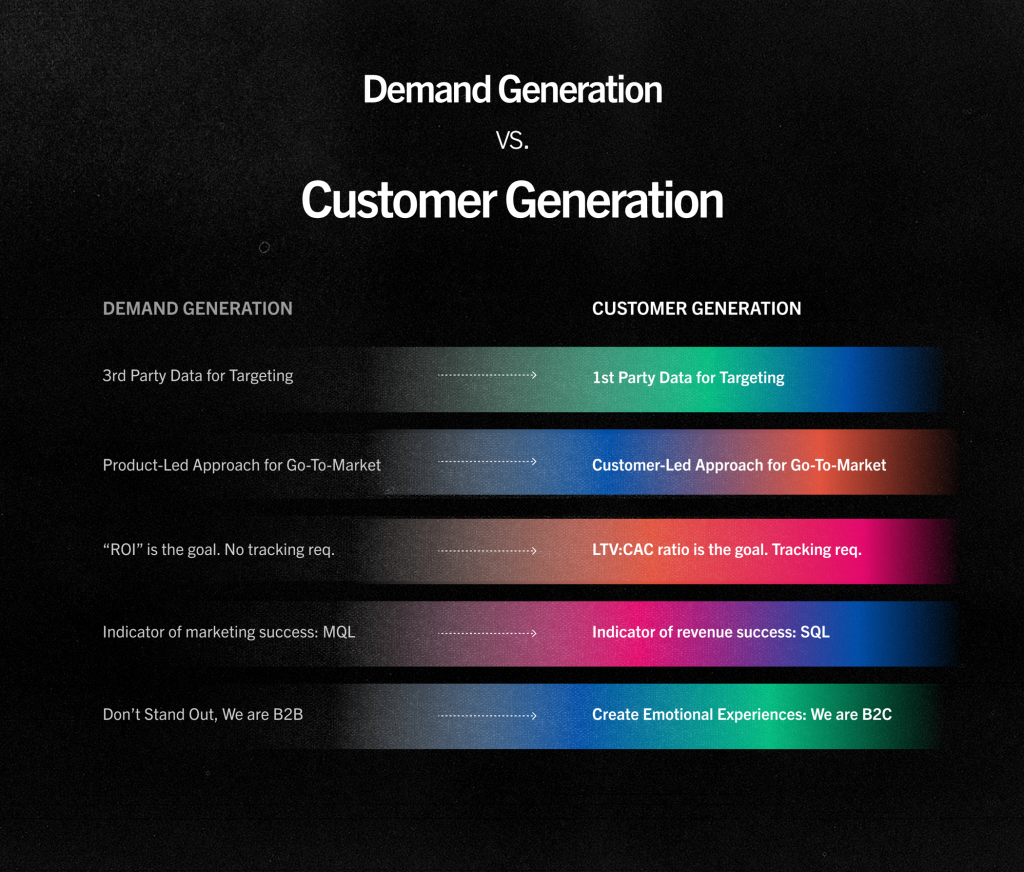
Even the best demand generation strategies seem to fall the slightest bit short of truly connecting with brands’ end customers. And that’s because of that oh-so crucial fact that Demand Generation seems to have forgotten: your product isn’t for everyone.
We’ve all embraced the methodologies of ICP marketing and curating a first-party understanding of our end buyers. And we’ve all seen the results. Isn’t it time we start doing the same in regards to first-party data for our marketing strategies as a whole?
If you’re interested in learning more about Customer Generation and how to evolve your ICP marketing – be sure to join Society for access to 1400+ SaaS marketing experts all dedicated to innovating the SaaS marketing industry.
-
 CEO
Garrett Mehrguth
CEO
Garrett Mehrguth
Did you enjoy this article?
Share it with someone!
